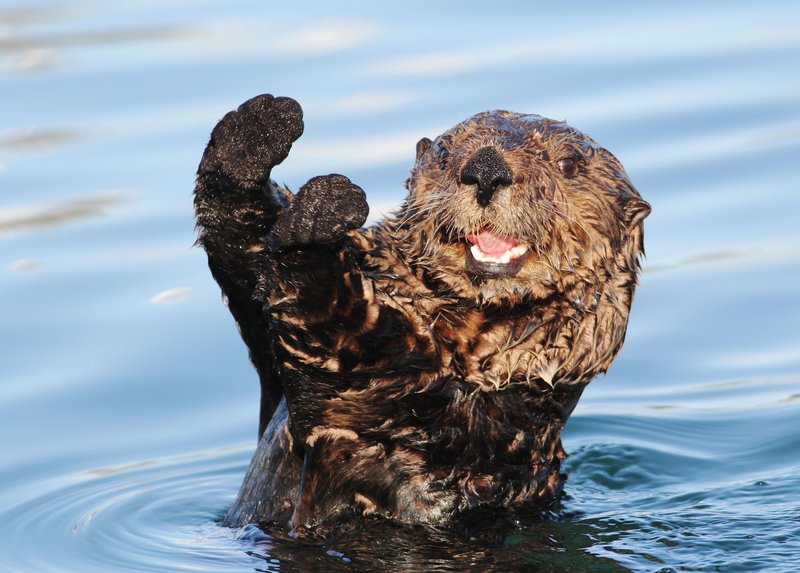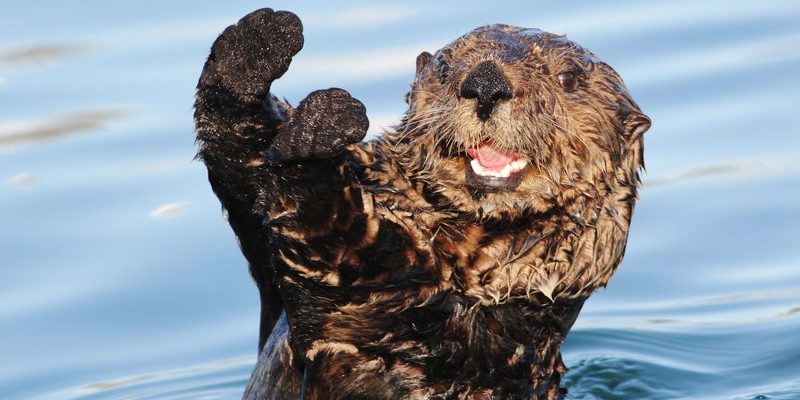
Just like humans use tools, sea otters have developed their own unique methods to make life easier. Imagine having a handy toolbox at your disposal, but instead of a garage full of tools, all you need is a smooth rock. That’s the life of a sea otter! Their intelligence shines through in their everyday actions. But what exactly makes them so clever? Let’s explore their cognitive skills, social behaviors, and problem-solving abilities to get a clearer picture.
Understanding Sea Otter Intelligence
When we talk about the intelligence of sea otters, it’s important to understand that it doesn’t always look the same as human intelligence. Sea otters demonstrate their smarts through their ability to adapt and use tools, which is a significant marker of cognitive ability in the animal kingdom.
Sea otters have a remarkable capacity for learning and memory. Researchers have observed that they can remember where they’ve hidden their favorite rocks, which they use to crack open shellfish. This ability to recall information and apply it shows that they think ahead, something that many consider to be a sign of intelligence. In fact, a sea otter can hide up to 20 rocks in its armpits for easy access when it’s time to eat. Isn’t that clever?
Not only do sea otters have a knack for using tools, but they also exhibit a range of social behaviors that further hint at their intelligence. They often work together to find food, showcasing a level of cooperation not seen in every species. This teamwork highlights their ability to communicate, plan, and execute strategies, all of which point to a high level of cognitive functioning.
Tool Use: The Rock Star of the Ocean
One of the most fascinating aspects of sea otter behavior is their use of tools. Picture this: a sea otter floating on its back, holding a rock in its paws. With a gentle tap, it cracks open a sea urchin to access the tasty treat inside. This isn’t just a cute action; it’s a prime example of how smart these creatures are!
Sea otters are known to use various types of stones, each chosen for its size and shape, to perform different jobs. They’ll often dive down to the ocean floor to find the perfect rock for the task at hand. It’s almost as if they’re going to a store to pick out the best tool for the job! This ability to select and utilize tools effectively reflects a level of problem-solving skill that’s impressive for any creature.
Moreover, sea otters don’t just limit their tool use to rocks. They’ve been seen using thicker, more rounded stones to break open the shells of more robust sea creatures. Here’s the thing: this adaptability is a significant indicator of cognitive ability. The fact that they can innovate and adjust their techniques shows a flexible mindset that many animals simply do not possess.
Learning Through Observation
Another fascinating aspect of sea otter intelligence is their ability to learn through observation. Just like a kid learning to ride a bike by watching someone else, sea otters can pick up skills by observing their peers. This is known as social learning, and it plays a vital role in their survival.
When a young otter watches its mother crack open shellfish, it’s not just passing time; it’s learning a crucial skill to help it thrive. This knowledge is often passed down through generations, showcasing a form of cultural transmission. Not every animal can boast this ability, which makes sea otters quite special.
You might be wondering how this works in the wild. Imagine a group of otters all gathered around a rock, each waiting for their turn to show off their skills. The youngest ones watch intently, learning the best techniques and improving their own methods as they grow. This not only helps them survive but also strengthens social bonds within their groups, enhancing their overall intelligence.
Social Structure and Communication
Sea otters are incredibly social animals, often forming groups called rafts. These rafts can consist of anywhere from a few to several dozen sea otters. Living in close quarters allows them to interact more frequently, fostering social learning and cooperation.
Communication plays a big role in their interactions. Sea otters use a range of vocalizations, body language, and even touch to engage with one another. They might chirp to signal distress or chitter when they’re excited. This ability to communicate effectively is another layer to their intelligence, showing that they can express emotions and needs within their social groups.
Interestingly, sea otters also demonstrate empathy, especially when caring for their young. Mothers will wrap their pups in kelp while hunting, ensuring they stay safe and secure. This protective behavior not only highlights their intelligence but also their emotional depth. Sea otters have social connections, just like we do, which can enhance their survival chances and overall well-being.
Problem-Solving Skills
Problem-solving is another area where sea otters shine. Their ability to tackle challenges shows off their cognitive prowess. Let’s say a sea otter encounters a particularly tough shellfish. Instead of giving up, it might try different techniques until it finds one that works. This persistence is a trait commonly associated with intelligent animals.
Researchers have conducted studies to assess the problem-solving abilities of sea otters. For instance, they’ve set up tasks that require food retrieval where otters have to navigate obstacles or manipulate objects. The otters display impressive skills, often using trial and error to figure things out. This flexibility and adaptability are key indicators of their intelligence.
Think about how this relates to their survival. In the wild, conditions are constantly changing, and a sea otter that can think on its feet has a distinct advantage. Whether it’s finding food or escaping predators, their problem-solving skills help them navigate a complex environment.
Conservation and Its Impact on Intelligence
As we marvel at the intelligence of sea otters, it’s also important to consider the challenges they face. Environmental issues, such as habitat loss and pollution, can affect their cognitive abilities and, ultimately, their survival. When their environments are threatened, so too are their chances to display their intelligence.
Conservation efforts are crucial in ensuring that these clever creatures continue to thrive. Organizations work hard to protect their habitats and raise awareness about the importance of sea otters in ocean ecosystems. By preserving their environment, we are not just saving a species; we are also maintaining an entire ecosystem that supports their remarkable cognitive abilities.
As we think about the future of sea otters, it’s essential to remember that each effort counts. Educating ourselves and others about the importance of conserving marine life allows us to protect not only sea otters but the intelligence and behavior that make them unique.
Final Thoughts on Sea Otter Intelligence
So, how smart is a sea otter? Pretty darn smart! From their tool use to social learning, they exhibit a range of cognitive abilities that demonstrate their intelligence. These behaviors not only make them fascinating creatures but also show us the depth of animal intelligence in our oceans.
Next time you see a sea otter floating effortlessly on the water, remember that there’s a lot more going on beneath that playful surface. Protecting their habitats and understanding their behaviors can help ensure that future generations get to appreciate their smarts. Sea otters are proof that intelligence comes in all shapes and sizes, and they deserve our admiration and respect.

